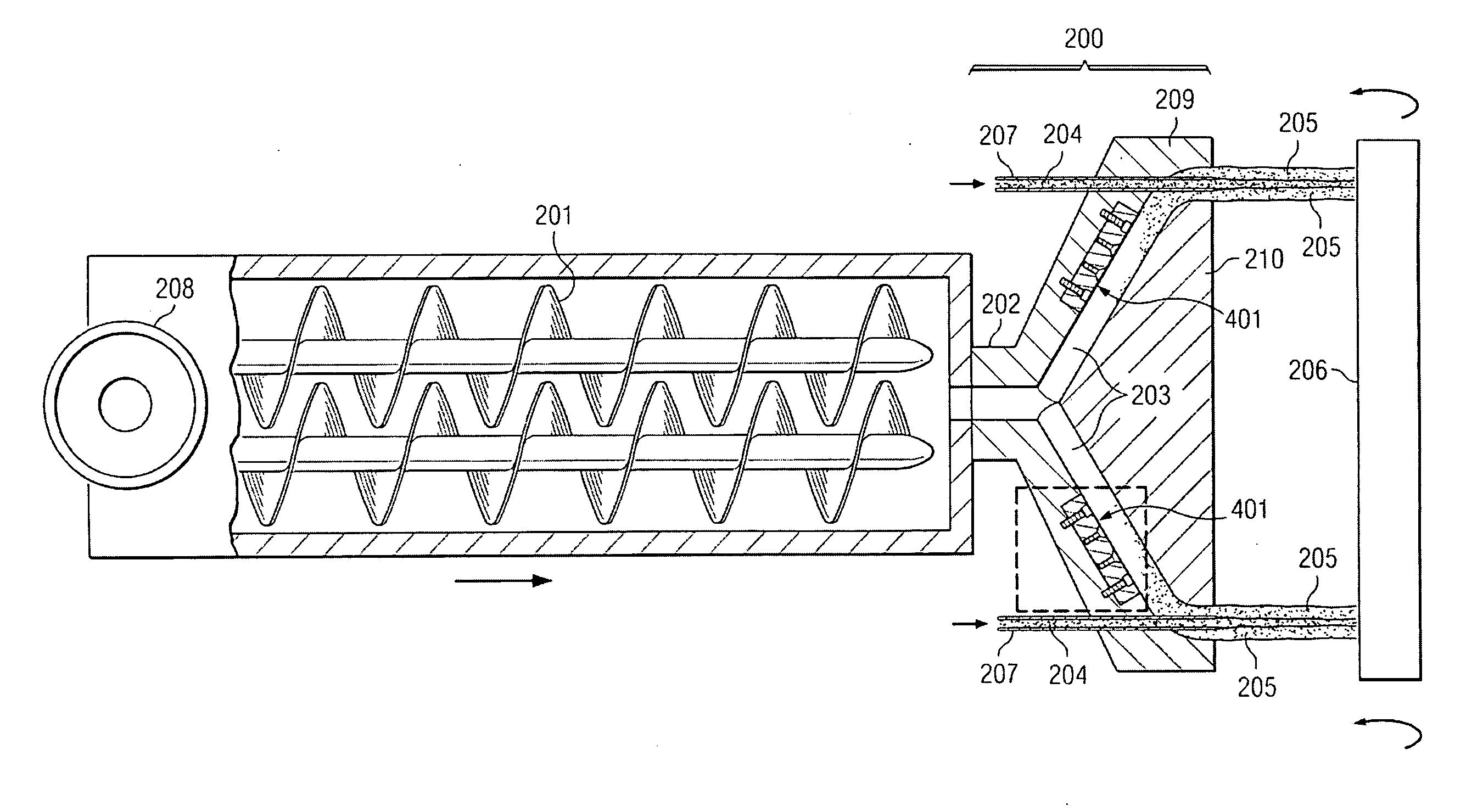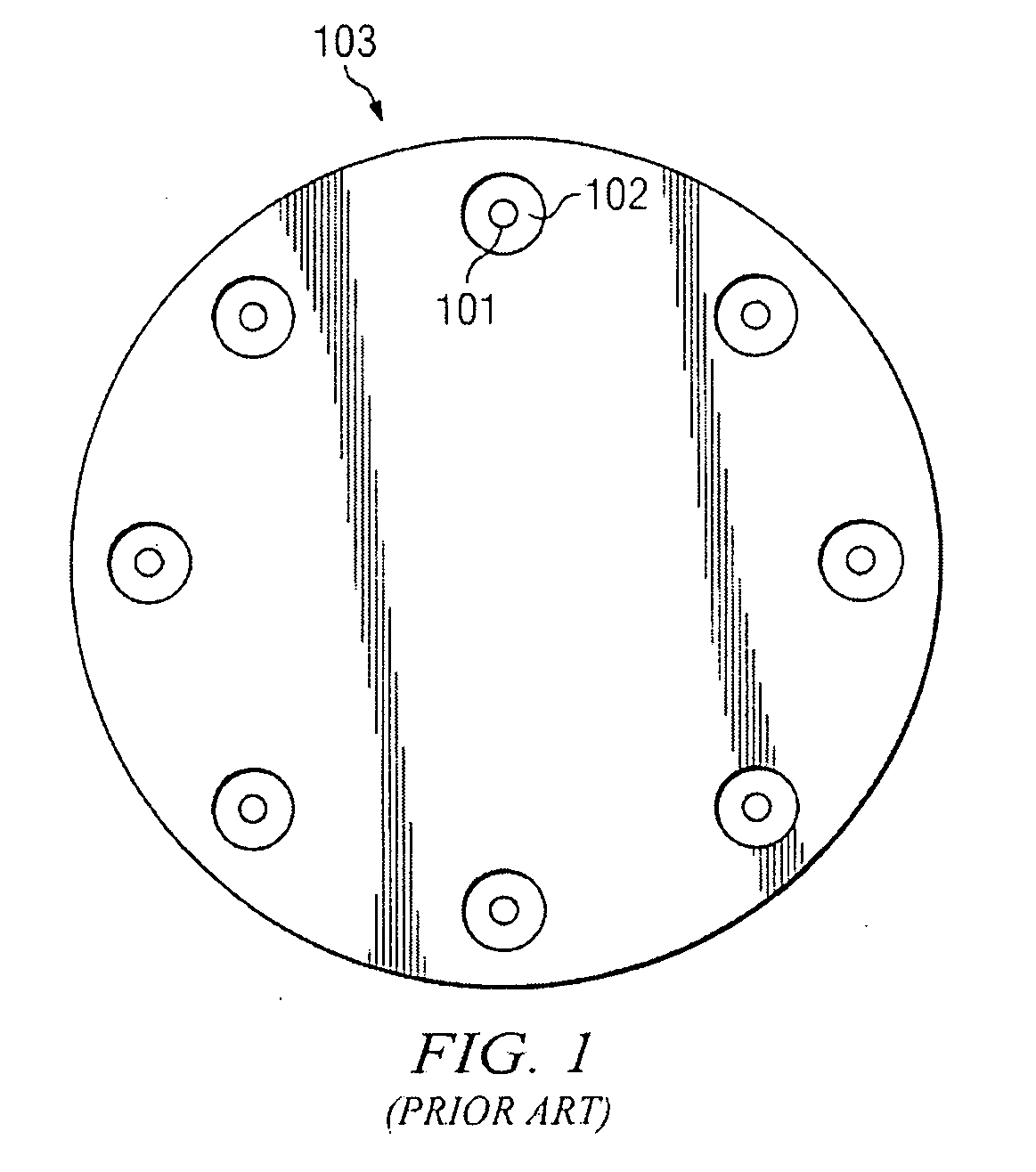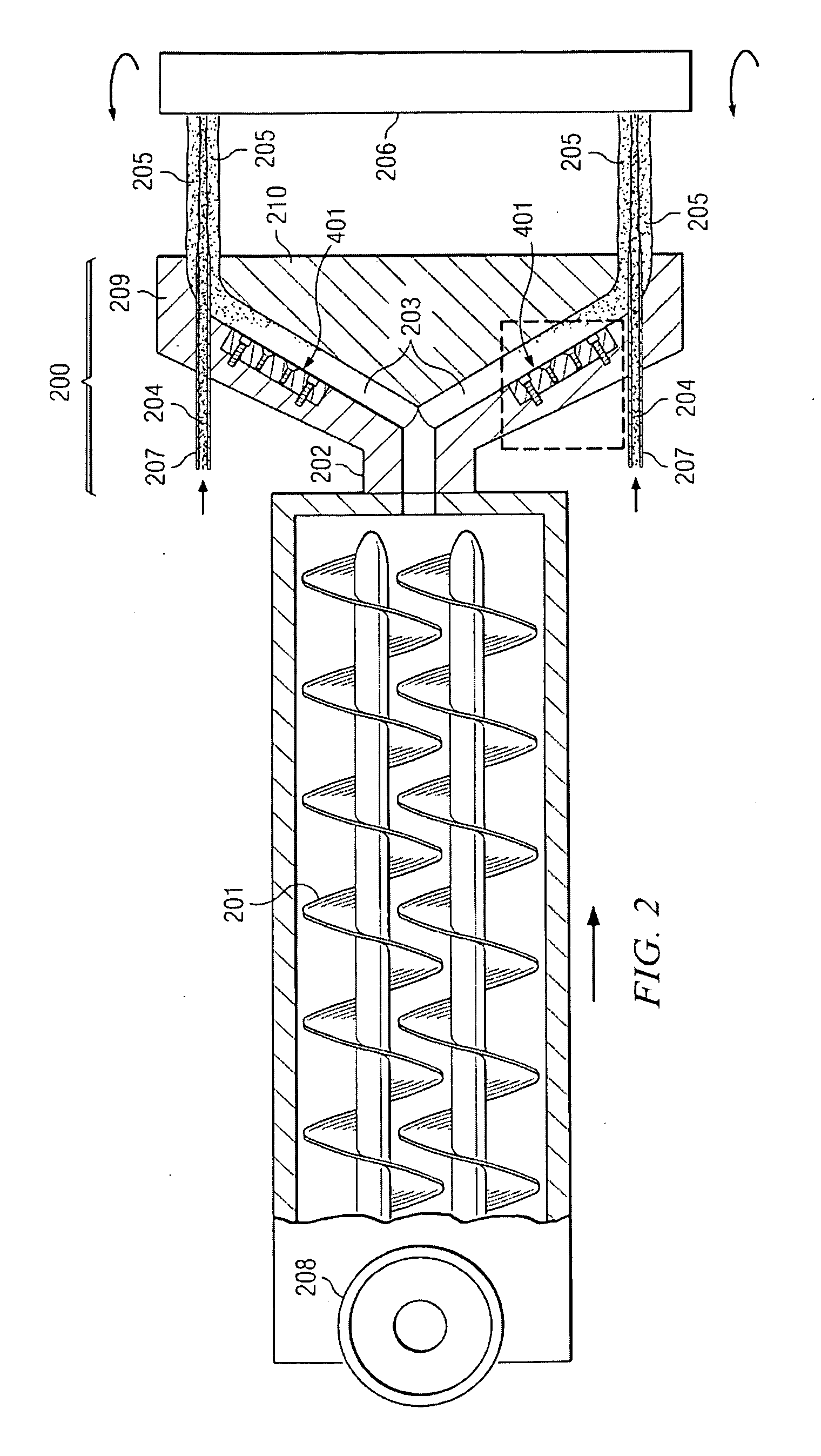Multi-orifice extrusion die and method for obtaining uniform flow
a technology of extrusion die and multi-orifice, applied in the field of extrusion die, can solve the problems of affecting the flow and velocity of each orifice, affecting the flow of each orifice, and accumulating before, so as to increase or decrease the flow and velocity through each channel individually.
- Summary
- Abstract
- Description
- Claims
- Application Information
AI Technical Summary
Benefits of technology
Problems solved by technology
Method used
Image
Examples
Embodiment Construction
[0017]Several embodiments of Applicants' invention will now be described with reference to the drawings. Unless otherwise noted, like elements will be identified by identical numbers throughout all figures.
[0018]FIG. 1 shows a planar view of a prior art co-extrusion die face, that can be used with one embodiment of the current invention wherein the co-extrusion die orifices are radially placed around the die face 103. Looking at FIG. 1 it can be seen that each co-extrusion orifice consists of two concentric appertures, an inner round orifice 101 and outer annular orifice 102. The inner orifice 101 represents the orifice where the inner product is introduced to the co-filled product, typically from a separate source. The outer concentric orifice 102 is the orifice where the outer extruded product exits the die face 103. Note that while FIG. 1 is a depiction of a co-extrusion die, the instant invention is not so limited. The instant invention provides a novel apparatus and method of p...
PUM
| Property | Measurement | Unit |
|---|---|---|
| residence time | aaaaa | aaaaa |
| mean residence time | aaaaa | aaaaa |
| temperature | aaaaa | aaaaa |
Abstract
Description
Claims
Application Information
 Login to View More
Login to View More - R&D
- Intellectual Property
- Life Sciences
- Materials
- Tech Scout
- Unparalleled Data Quality
- Higher Quality Content
- 60% Fewer Hallucinations
Browse by: Latest US Patents, China's latest patents, Technical Efficacy Thesaurus, Application Domain, Technology Topic, Popular Technical Reports.
© 2025 PatSnap. All rights reserved.Legal|Privacy policy|Modern Slavery Act Transparency Statement|Sitemap|About US| Contact US: help@patsnap.com



